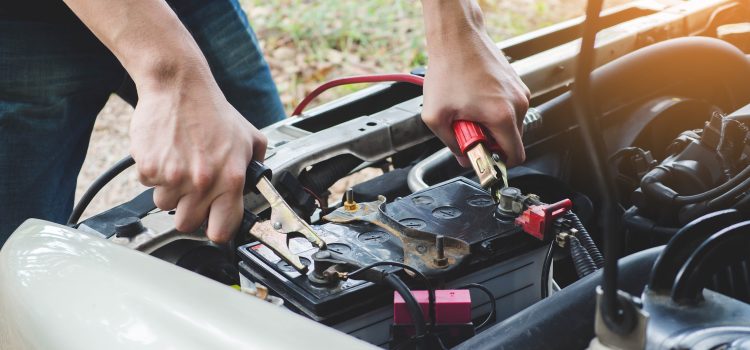

Comedian Demetri Martin once said, “If you’re a battery you’re either working, or you’re dead.” It’s a tough life, but something has to keep our cars reliably cruising along the road.
As car owners, we tend not to give our batteries enough credit. We assume the battery will work when we turn the key and don’t expect it to feel the effects of the seasonal changes.
This is part of the reason a dead car battery can take us by surprise. We usually assume it will work, so we’re stunned when it doesn’t.
It’s often difficult to tell when you need to replace your car battery. There are a few telltale signs, though, which we’ll explore further ahead.
Battery Life
The first question a lot of people might be wondering is: how long do car batteries last? You might be having a problem with your battery and wondering if it’s just you.
Car battery life expectancy depends on a variety of factors. Your driving habits, location, climate, and charging system all play a role in how long your battery will last you.
As a general rule, start considering replacement after about four years on the road. If your car needed a jump and your battery is over four years old, you’ve probably diagnosed the problem.
Figuring out how to tell that your battery is failing is another problem altogether. Modern testing kits can only give you a general idea of how long your battery has left. They won’t give you a purely accurate reading, so a lot of the surrounding precautions depend on personal knowledge.
There also aren’t very many signs that your battery is starting to decline. For many people, the day comes when their car will simply cease to start. That’s how you know it’s time for a car battery replacement.
What Factors Impact Battery Life?
If four years is about the average life of a battery, should you start to worry if your battery dies before this benchmark?
In short: not really.
In a perfect world, car batteries would last four to five years, die, and then you’ll know it’s time to replace them. Unfortunately, we don’t live in that perfect world. You’re likely putting your battery through a gauntlet of survival without even knowing it.
If you live in a particularly hot environment, your battery life will lower a bit. The heat accelerates the chemical reaction inside the battery, leading to a decreased lifespan for those in the southern parts of America.
On the other hand, If the extreme cold lingers for months – like it recently has in the northern parts of this country – your battery will last longer. The cold weather delays the chemical reactions in the battery, leading to more juice for a longer time.
Additionally, all the items we’re charging in our cars will shorten the life of a battery. It seems that we’re always charging something in our cars, from cell phones to GPS navigators, to the ever-popular vape pens, something is almost always plugged into that charging port.
Your driving style and frequency also take a toll on your battery. If you regularly drive on harsh terrain, the battery will shake and could come loose after repeated trips.
While you might think long trips have the biggest drain on your car battery, this is incorrect. Short commutes take the most out of a battery since it takes more energy to start the car than it does to keep it moving.
Your battery charges over long trips, as the energy from the car, replenishes the energy the battery used to start. If you never run your car for long enough, you’ll never fully charge your battery.
This effect might cause your battery’s death to sneak up on you. Tests won’t show that your battery is failing if it never gets a full charge. Instead, one day you’ll turn the key and find that it won’t start. After that, you’ll need to consider a car battery replacement.
Signs Your Car Battery is Failing
A lot of people won’t notice that their car battery is failing until they turn the key and hear a click. Still, this doesn’t always mean your car battery is toast. You could have left your door ajar or forgotten to turn your headlights off, therefore draining the car battery. If this is the case, all you have to do is give it a jump and run the engine for a bit.
One of the best ways to tell if your car battery is failing is to assess it yourself. Take an audit of all of the elements we listed above, and diagnose whether or not it’s time for a car battery replacement.
Consider how long it’s been since you last replaced your car battery. If it was over four years, it’s probably about time for a new one. If you often take short trips, charge your phone in your car, or live in a hot climate, remember that your battery life will be shorter than average.
A glimpse at the battery will also help give you an idea whether or not you need a replacement. A lot of batteries will come encased in insulation, which makes it hard to tell if something’s wrong when viewing from the outside.
Remove the battery from its case and look to see if there are any signs of corrosion or leakage. If there is, it’s time to purchase a new battery and swap it out. You can clean off any leakage and continue to use the battery for a bit, but you should still explore a replacement. You won’t want the battery to die when you need your car the most.
If you smell sulfur during this process, your battery is overheating. If you live in a hot climate, try parking under the shade if you can. Otherwise, take a break from starting your car to prolong the life of your battery.
Changing Your Battery
A car battery cost isn’t very high when you consider other car maintenance costs. Paying someone to replace the battery for you is where the real price comes. Fortunately, replacing a car battery isn’t too difficult – even for beginners.
If you’re looking for a car DIY job that won’t be too hard, try replacing your car’s battery. It’s a great beginner DIY project and will teach you a bit about what goes on under the hood.
Buying a New Battery
Most car batteries are the same, and brand names don’t matter very much. Some will tell you that one brand is better than another, but it makes very little difference in the long-run. If you can find a good deal on a battery, we suggest choosing that product.
One of the elements you should look for is the manufacturer date. Manufacturers should sell their batteries within six months, so check the date on the battery to ensure you’re not buying a lemon. The date will usually be coded, with a letter corresponding to the month. A means January, B means February, C means March, etc. The number next to that will be the year (example: 18 = 2018).
Replacing Your Car Battery
Replacing your car battery is simple if you know what you’re doing, and shouldn’t take much more than an hour – even if it’s your first time.
The battery will almost always be located under the hood, but some cars place it in different spots. Check your owner’s manual just to be safe.
Once you’re sure where the battery is, find the positive and negative side, marked with a “+” and “-.” Loosen the nut that connects the cable to the negative end of the battery. Us a battery terminal puller to remove the negative and positive cables once you’ve finished.
Next, remove the strap that holds the battery in place and carefully lift it out of the terminal. The battery might be a bit heavier than you expected, so plan accordingly.
If the terminals are already clean, you can proceed to install your new battery. If not, use a brush to clean out any corrosion you might see.
Place the battery in the terminal, with the positive side matching the red cable. Refasten the clamp to secure the battery, and remove any anti-corrosion caps that may come standard on fresh products.
Place some grease on the battery terminal to prevent future corrosion, then connect the cables back to the battery. Always make sure to attach the positive cable first. Wiggle the battery a bit. If it doesn’t move, you’re finished, if it does, tighten the fastening clamp and try again. After that, you’re all finished. Start your car to make sure everything works correctly.
The Car Battery Replacement Guide
If you follow these steps for testing and replacing your car battery, a dead battery shouldn’t catch you by surprise. You’ll be able to change your battery quickly with a bit of practice and won’t get stranded on the side of the road.
Don’t let a dead car battery ruin your day, and don’t pay extra money to have someone replace it for you. You can complete the job yourself – all you need is a bit of guidance.
(Here are other car repairs you can do on your own.)

No comments so far.
Be first to leave comment below.